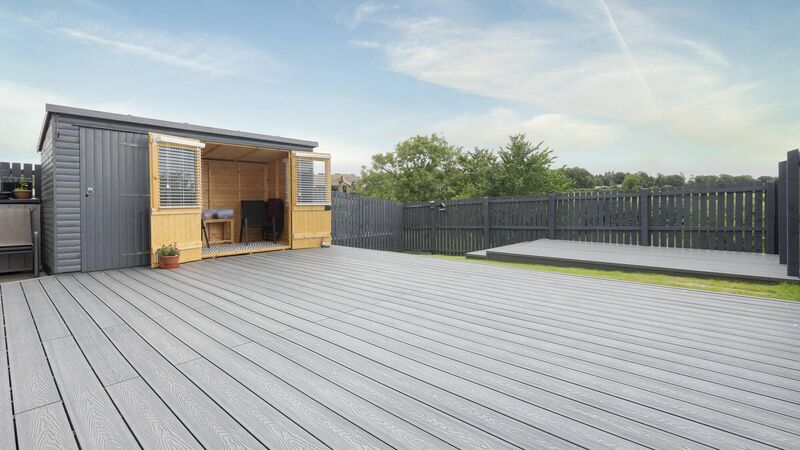Kieran McCarthy: How do I replace an old wooden patio?

There is no doubt that the vast array of timber decks installed during the heyday of the Celtic Tiger era have long since reached their sell-by dates.
Hi Clara, Thank you for your question.
Yes, there is no doubt that the vast array of timber decks installed during the heyday of the Celtic Tiger era (my own house included) have long since reached their sell-by dates. I guess in the hysteria of that period in time we imagined with our new-found wealth, the sun would never stop shining, and the decks would stay dry and decay free but eventually, when the storm clouds gathered, the rain came and washed it all away.
So, what to do? The first thing to remember is that a timber decking set-up and a paving set-up are very different. Decking is fixed to timber joists which are usually set level to the internal floor of your house and in many cases, they are suspended quite a height above your garden level on vertical posts. So, you may have quite a height to deal with when this is all stripped away.
Typically, the water passes between the decking timbers onto a membrane above your ground below (which may have decayed somewhat by now) and this water dissipates locally to the surrounding soil or perhaps a gravel margin, depending on the original design.
When you consider your new design, there are a few things you will need to keep in mind. Firstly you will need to set your new paving level. If the ground level outside is considerably lower than the floor level in your house (eg 300mm or 1ft) it may be simplest to install a step or two out from your patio door to transition in height from inside to outside. If you wish to avoid this you will need to install a considerable amount of compacted layers of hardcore to make up the levels and you will likely still need a step or two to transition down to your back garden.

Next, I would consider drainage. In a hard surface such as paving you will generally need to fall the paving away from your house. A gentle fall will suffice just enough to get water moving. If your paving is in a confined space with walls or grass banks at the edges, you may not be able to tilt the paving enough to disperse the water and you may need to install a slot drain in the paving itself. It may be that you install one drain at the doorway (to ensure no water enters your house) and another slot drain, say further out towards the edges where the majority of the surface water will fall to.
When looking at the build-up under the paving it really depends on the paving chosen. In my experience, a concrete slab under the paving is only really required when you envisage heavy traffic on the paving which is rarely the case. I would imagine that the paving tiles you have chosen will need a sand-cement base. I would engage a paving company to install this so that they will be responsible for getting the level and indeed the falls correct to receive the finished paving surface above.
Once the paving slabs have been laid, you need to consider what pointing will suit the tiles. This is a coloured grout that is carefully placed between the tiles and completes the surface finish. I would seek advice either from the paving company if they have supplied the tiles and are experienced in laying them or indeed the company who stocks the tiles in your local area as to the specific grout required.

The porcelain tile-type paving you have chosen is quite robust and will require very little maintenance but the tiles are quite thin and easy enough to break or crack so take care when carrying any heavy equipment over them (eg gas bottles for your barbecue) and don’t forget, the best way to check on the drainage of your new patio is a good old wet Irish bank holiday!
- Kieran McCarthy is a building engineer and director of KMC Homes bespoke A-Rated new home builder, serving Cork and Limerick. He is also a co-presenter of the RTÉ property show Cheap Irish Homes.
- Follow Kieran on Instagram @kierankmc for more home-building information, tips and Q&A advice.
- Tune in to Kieran’s new podcast, Built Around You on Apple Podcasts and Spotify and on the Built Around You YouTube channel.










